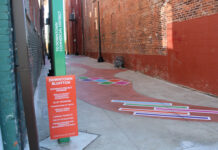Built in 1879, the Wells County landmark will be an evolving part of Fort Wayne’s riverside development
By MARK MILLER
A part of Wells County will be playing a significant role in Fort Wayne’s riverside park development — exactly what that will be is “a work in process,” Don Steininger says.
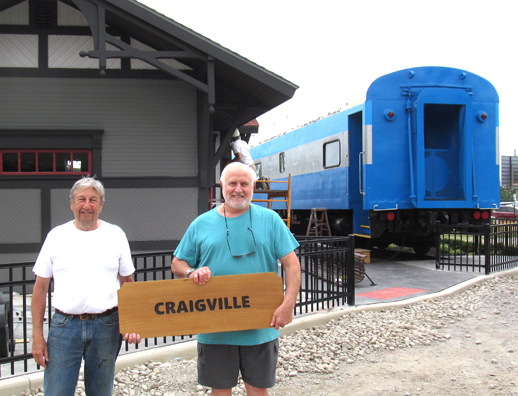
The railroad depot building that was built in 1879 and remained a part of Craigville’s landscape for 100 years is getting the finishing touches of its restoration on the north side of downtown Fort Wayne. It will anchor the “Pufferbelly Junction,” a privately owned piece of land which will initially be adjacent to the developing Promenade Park on the north side of the St. Mary’s River, the focus of Fort Wayne’s downtown riverside development and revitalization efforts. Eventually, it will likely be surrounded by Phase 2 and then Phase 3 of that park, but there are a fair amount of decisions to be made and options to consider.
How a railroad depot traveled from its original home and purpose to become (likely) an ice cream parlor and (possibly) a ticket station for a small rail-line in the middle of Fort Wayne is a long and winding (rail)road.
———
The history of the railroad depot in Craigville reflects much of the history of the town itself. Alan Daugherty, Bluffton, is intimately familiar with the history since his family was intimately involved.
Daugherty’s great-great-great-grandfather, Peter Hetrick, could easily be called the “father of Craigville,” and indeed, Daugherty relates, “everybody around town called him ‘grandpa.’”
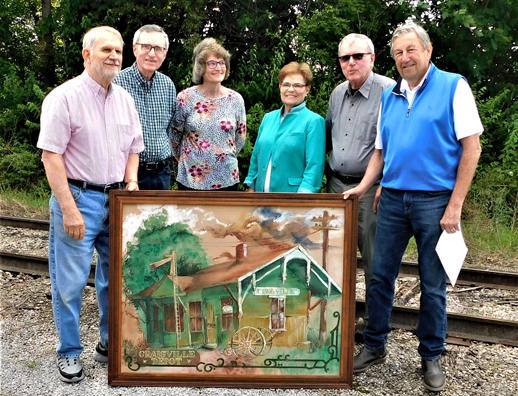
It was on a corner of Hetrick’s farm that Craigville was plotted in 1879. The Toledo, Delphos & Burlington Railroad was carving its way from Ohio westward and had reached Craigville and then Bluffton the same year.
Hetrick, who Daugherty says was the first white man to live on that land in Lancaster Township, decided to name the new town after William Craig who was the clerk of the circuit court at the time and apparently an investor in the railroad. The railroad laid out the town’s streets and lots, which were initially sold by Hetrick for $20 each.
“Eight days later,” Daugherty says, “the post office started.” Craigville would eventually boast a bank, several stores, a school and at least two churches.
The depot was initially located on the south side of the railroad tracks, just east of Main Street, which for years was also Indiana Highway 301.
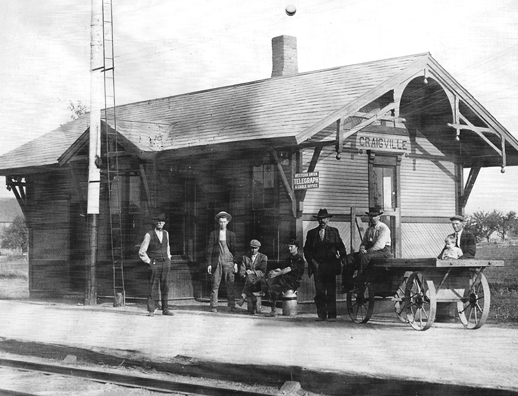
At some point in the 1940s, the Craigville depot was no longer being utilized by what had by then become the Nickel Plate Road after a number of consolidations and mergers. Around 1950, the building was purchased by the Craigville Telephone Co. and moved across the tracks where it was used for storage.
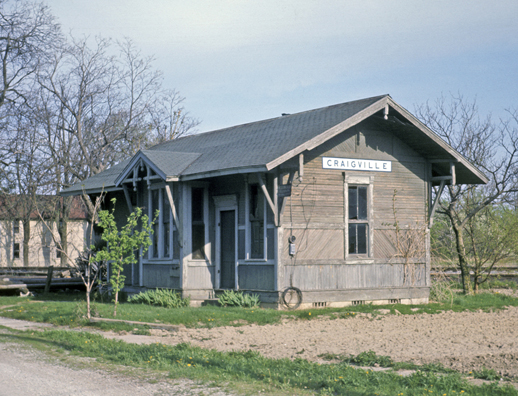
The telephone company was (and is still) owned by the Howard and Ilene Reinhard family. Arland Reinhard remembers that “Dad assigned Carlton and me the annual task of organizing and cleaning out the depot.” Had we known it would one day be restored to be used as a tourist attraction, I might have done a better job.”
Daugherty, who grew up in Craigville, remembers spending time in the depot as a youngster as well. Friends with Arland and Carlton Reinhard, they would sometimes explore the depot’s interior.
Its presence in Craigville ended in 1979 — almost exactly a century after its arrival — when it was sold to Mr. Ed Byers who would use it at what is described as a “narrow-gauge amusement railroad park” in New Haven.
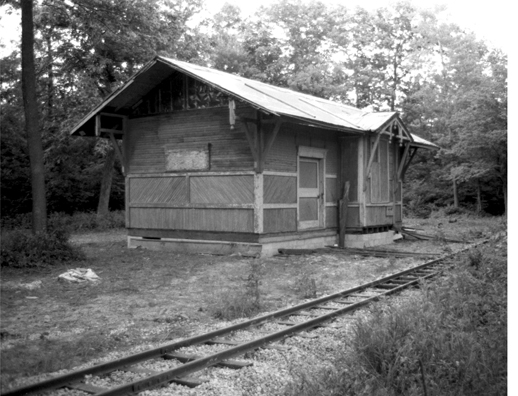
Don Steininger will smile and chuckle when asked about the plan that brought the depot to downtown Fort Wayne. He purposely uses the word “process” rather than saying it’s “a work in progress.”
“It’s more like ‘Ready, Fire, Aim,’” he says. “We talked about different ideas for three years, I just wanted to do something.”
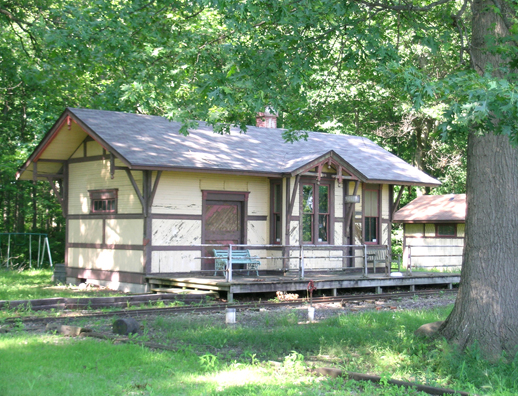
That “something” became a new non-profit organization, an off-shoot of the Fort Wayne Railroad Historical Society. They called the group “Pufferbelly Junction.” It now has its own 18-member board, it has purchased this small plot of land just north of the St. Marys River and funded the restoration of the depot and a World War II “hospital car.”
A native of Auburn, he dates his interest in railroads to a six-month stint of working for the Baltimore & Ohio Railroad in Garrett in his youth. After earning his law degree at Indiana University in 1973, he began a career in Fort Wayne that evolved into his own real estate development company. He also has a lengthy resume in community and philanthropic organizations.
He credits Kelly Lynch for “dragging me” onto the board of the Fort Wayne Railroad Historical Society and their Headwaters Junction project, which was initially intended to be developed in Fort Wayne. When it became evident that project was moving to Angola, Steininger recruited other community leaders to focus on an alternative: Pufferbelly Junction. And an old train depot that had been sitting in a deteriorating former railroad park would be the centerpiece.
When Ed Byers purchased the Craigville Depot in 1979 from the Craigville Telephone Company, he moved it to the park he had in New Haven. The park included a small railroad for children’s parties; the depot became part of the scenery. After he died in November 1990, the park fell into disrepair. Lynch, through their shared historical railroad interest, knew Byers and then worked with his son, Greg, to preserve what they could.
In June 2019, the depot was moved to one of the large warehouses at the Casad Depot, a large railroad complex east of New Haven that was of strategic importance during World War II. Steninger’s new group took over funding its restoration, which would take three years.
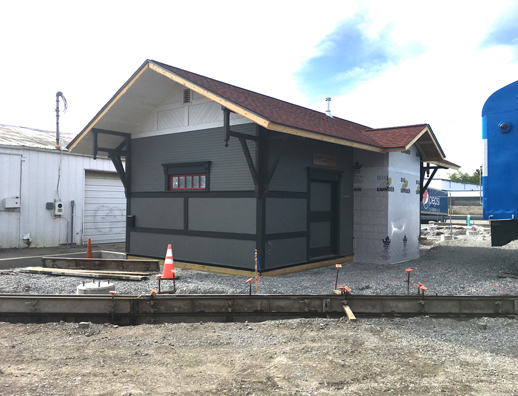
One of the people he recruited to the effort is Craig Berndt, who had recently retired as the Deputy Director of Community Development for the city of Fort Wayne. He is also a noted railroad historian and has written several books, including “The Lake James Electric Railway,” a history of the railway that ferried passengers from downtown Angola to Lake James.
Steininger was aware of a small plot of land close to the developing Promenade Park. It had been owned by the Don Hall family (of Fort Wayne restaurant fame). The group purchased that with the plan to locate the depot there.

Two years ago, they were presented with an opportunity to obtain a World War II hospital car and decided that would fit well next door to the depot as a small event center. The depot was moved from the Casad warehouse to the site in June of this year, followed shortly by the rail car. Much of its renovation was also done at the warehouse, but work on both continue.
“The plan right now,” Steininger explains, “is to lease the depot to a business.” He has one lined up — an ice cream parlor — which he knows will be seasonal.
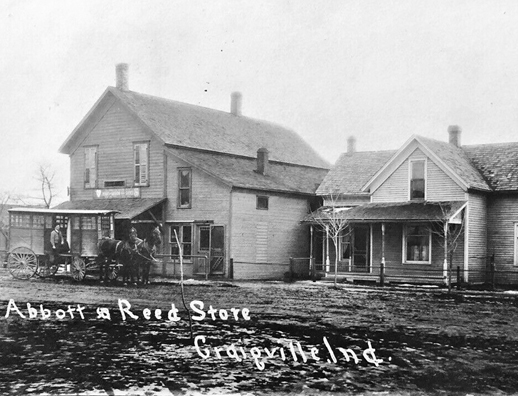
“We’ll have it ready by Labor Day, but I don’t think they’ll open the business until next season,” he says. “But it would be neat to open this all up for people to see the night of the Santa lighting,” which takes place on Thanksgiving Eve.
The hospital car was completely gutted except for a most interesting electrical closet that now has a glass door and interior lighting. The car will be available for rental for small group meetings and events.
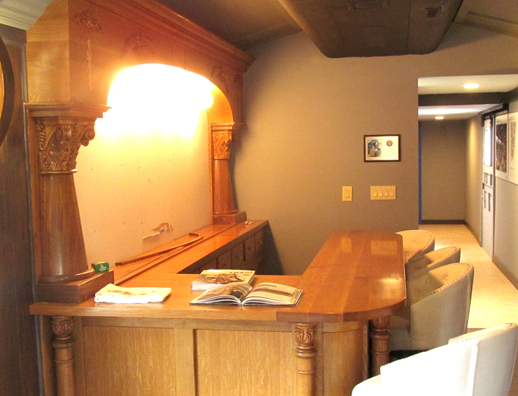
“It will be ideal for us to do some fund raisers in,” he notes. “It will show what we’ve done so far and then what we hope to do next.”

That “next,” as Berndt explains, is set up a narrow-gauge railway to shuttle people to and from perhaps the Glenbrook Mall. Steininger would like to connect it to the Fort Wayne Children’s Zoo. “We’ll see,” Berndt says.
“Craig brought his community development and government skills to us,” Steininger notes. “He will be key in helping us go forward.”
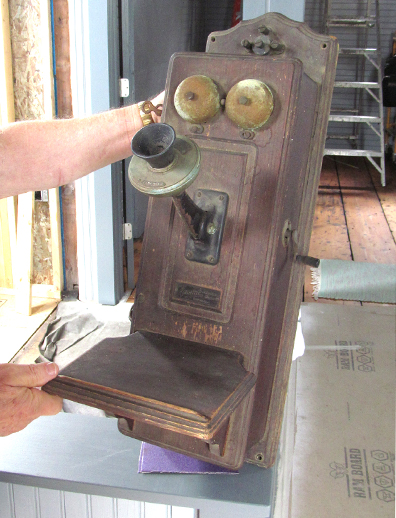
The entire project as been funded by private donations — over $1 million has been


